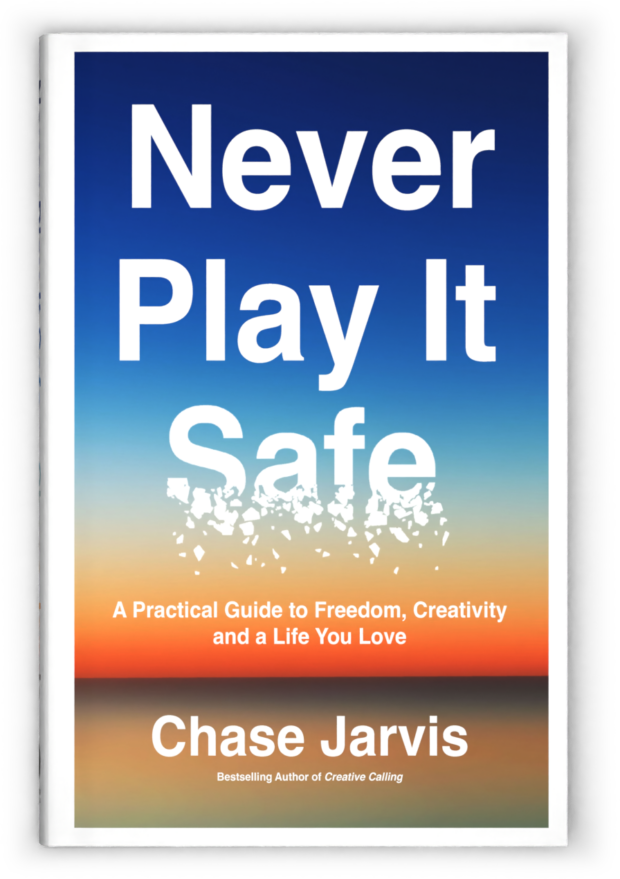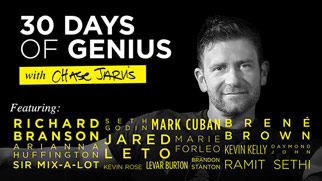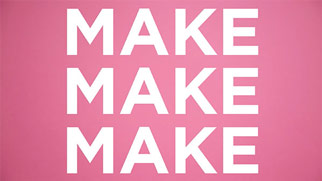No one has single-handedly given me better insight about the business side of art than the New York Times bestselling author, Ramit Sethi. He’s a business savant, mindset master, habit king, and money maker.
Ramit is a regular on the show by now, and this episode is the first one we did together. It was such a hit and I still get so much positive feedback on how powerful his advice is that we had to share it with you on the podcast. Our conversation is packed full of both mindset shifts as well as tried and true tactical advice so you can earn more money. And we’re not talking nickels more. We’re talking 10x more. Give it a listen and give the techniques a try.
In today’s episode:
- If you can learn to understand your client, find solutions they need, and communicate in their language, price becomes a triviality. Show your future clients you’ve done the work by using “the briefcase technique.”
- We talk about negotiating. If you’re a freelancer, are you getting paid by the hour? We need to change that to value-based pay…
- Ramit shares how to, step by step, land your next pitch, freelance gig, double your rates, make more money. I’ve always felt very competent in this world, but Ramit’s knowledge helped me drive a step change into my growth around the business of creativity.
Ramit’s insights on how to approach business are transformative, particularly for those who want to elevate their income and create lasting success. His advice on understanding your client’s needs and shifting from hourly pay to value-based pricing are game changers. It’s all about finding the solutions that matter to your client and communicating those in a way that makes price irrelevant. This mindset can lead to significant growth, especially in creative fields where many struggle to scale their businesses.
Ramit’s step-by-step strategies empower entrepreneurs to confidently raise their rates and offer more value, which not only attracts high-quality clients but also fosters long-term success. His approach doesn’t just boost your business—it redefines how you approach work itself.
When you apply this mindset shift to industries that face higher risk, such as for collection agencies, it’s equally important to set up the right business structure. These types of businesses often find themselves in need of specialized services that understand their unique challenges.
High-risk merchant accounts are tailored to businesses that deal with large transactions, chargebacks, or industries considered high-risk, like debt collection. Having the right payment processing solutions ensures these agencies can continue to operate smoothly, handling customer transactions with the same level of professionalism that Ramit encourages in all businesses.
By setting up robust financial systems that account for these complexities, businesses can position themselves for sustainable growth, just like the creative entrepreneurs Ramit talks about.
Enjoy!
Mistake number one is expecting the other person to recognize your brilliance without you even communicating it.
FOLLOW RAMIT:
instagram | twitter | website
Listen to the Podcast
Watch the Episode
Subscribe




Some Questions I Ask:
- Give me the lowdown on your background. [6:20]
- Tell me about your book, I Will Teach You To Be Rich. [13:05]
- How do creatives use the pay-certainty technique to market to their ideal clients? [19:00]
- What steps can you take to get inside the head of your customer? [26:20]
- Talk about the difference between getting in the head of your customer and trying to fool them. [30:50]
- Question from audience: How can we as photographers stir up initial contacts? [45:30]
- Question from audience: How do I successfully transition out of my 9-5 job into a full time life as a creative? [48:45]
- Question from audience: If you’re in a small market, how do you specialize your craft? [53:50]
- Question from audience: If you’ve got quality content and decent web traffic, how do you turn those views into sales? [57:57]
- Question from audience: How do you implement the briefcase technique if you have a partner? [1:01:48]
- Can you give us some examples of specific wording that will help increase the value of your work? [1:05:40]
- Question from audience: Chase, describe the first gig you landed and the first pitch you bombed at. [1:11:50]
- How would you ask for a raise now? [1:16:30]
- Question from audience: How do you decide your rate? [1:18:55]
- Talk to me about working for free. [1:25:06]
In This Episode, You Will Learn:
- How Ramit learned to negotiate, and how he makes negotiation a win-win. [7:00]
- The number one reason people want to have a side hustle is not to ball in up in Vegas… it’s to have the option to eventually quit their jobs. [10:05]
- 80% of negotiation is done before you step into the room. [11:30]
- Why creatives are terrible at representing themselves. [14:25]
- Craft is important, but make sure improving your craft is not at the expense of growing your business. [14:40]
- How to apply the “pay-certainty technique” to figuring out who your customer is. [17:00]
- Mistake #1: thinking your customer should recognize your brilliance without you having to communicate it. Explain what went into doing the work and why it’s unique. [20:45]
- Don’t try and be better, try and be different. Check out the book by Peter Guber Tell To Win about how to tell a story. [22:15]
- Don’t try to appeal to everybody. “When you can really hit on what they want, what they hope, fear, and dream, price becomes almost a mere triviality.” [22:44]
- How to use the “straight jacket technique” and coffee dates to get in the head of your ideal client. [27:40]
- How to use a blog and social media to give your prospective clients a glimpse into your personality. [30:40]
- How getting clients is like getting a date. [31:00]
- The Briefcase Technique. Game changer. Try it. [36:08]
- What happens when you talk less during negotiations. [41:25]
- How to get your first 3 paying clients. [46:00]
- Get your side hustle off the ground by prioritizing and poring energy only into what matters. [49:00]
- How my employee, Norton, busted his butt to come work for me. [51:20]
- Two ways to narrow your niche; ask for referrals from customers you like working for, and think outside of your immediate geography. [54:00]
- How I keep clients coming back by doing interesting personal projects. [58:00]
- Why you need to start an email list now and how to approach it. [1:00:45]
- You need to be the visionary, not a technician. [1:04:10]
- How to use high competence triggers to sell your vision. [1:06:02]
- How I landed my first gig, which paid more than I made in the previous year. [1:08:00]
- How to ask for a raise. [1:16:30]
- My typical negotiation strategy. When quoting your rate for projects, I tend to ask what the budget is before blindly quoting my standard rate. [1:19:00]
- When negotiating, don’t leave deliverables on the table if your asking price decreases. [1:22:00]
- How to use testimonials as partial payment for your first few clients. [1:23:22]
- How to use working for free to your advantage. [1:26:10]
This podcast is brought to you by CreativeLive. CreativeLive is the world’s largest hub for online creative education in photo/video, art/design, music/audio, craft/maker, money/life and the ability to make a living in any of those disciplines. They are high quality, highly curated classes taught by the world’s top experts — Pulitzer, Oscar, Grammy Award winners, New York Times best selling authors and the best entrepreneurs of our times.

























